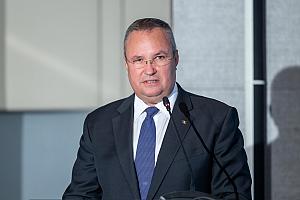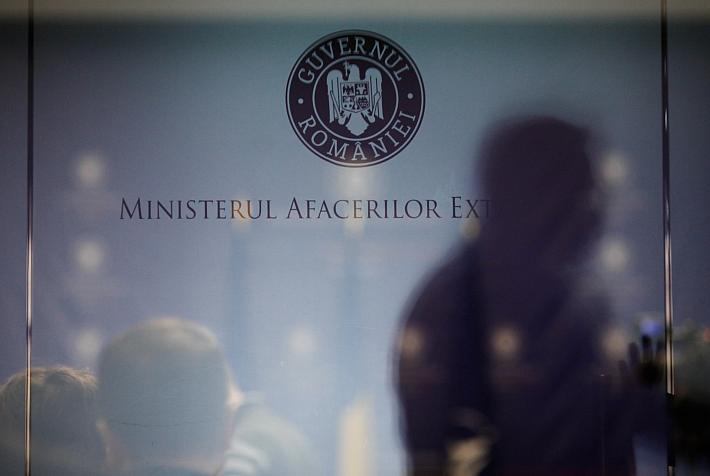Foreign investors align with Govt. on ten priorities for Romania’s future

The response to the current economic challenges that Romania is facing should not only be based on solving problems in the short term but should also help prepare the economy for the future, the foreign investors’ representatives and those of the Government agree.
The Foreign Investors Council (FIC), one of the top organizations representing foreign investors in Romania, launched on September 7 the 2022 edition of the ‘Va Urma’ (To Be Continued) report, aiming to highlight the strategic directions Romania should follow to strengthen its economic growth and ensure the well-being of its citizens.
Prime minister Nicolae Ciuca, together with members of the Government and Parliament, international institutions, and economic leaders attended the event, which was the first step in setting country directions agreed upon and supported by the authorities, representative international institutions, and the business environment.
The top ten long-term measures decided as a result of the joint debates are as follows:
- Defining a long-term strategy to attract foreign investors to Romania with a focus on high added value and competitive advantage sectors (human capital, natural resources).
- Promotion of foreign investments in Romania and domestic investments abroad by establishing an institutional mechanism under the coordination of the Prime Minister.
- Improving energy security by boosting the development of new production capacity and implementing new forms of state aid and financing mechanisms for the entire value chain to ensure liquidity to producers, distributors, suppliers and consumers.
- Improving waste management system (collection, recovery, recycling), following the extended consultation with all parties.
- Healthy Romania: redesigning the health system with focus on prevention, access to medical services and innovative medicines (encourage innovation and production in Romania), telemedicine, ambulatory care, patient digital file and development of the medical education system to a digitally enabled for all.
- Educated Romania for the preparation of the workforce of the future (access to education, reduction of school dropout, dual educational system, continuous training, scholarships).
- Public institutions and SOEs top management recruitment through transparent processes, assisted by specialized recruiters.
- Increasing the predictability of the legislative framework and improving regulatory measures (aligning strategies in different sectors together with their coordinated implementation).
- Digital literacy programs (students, local and central administration, private sector).
- Digitalization of the existing legislative framework and facilitating public-private digital interactions (ONRC, digitalization of ANAF, REVISAL).
Other possible measures with immediate impact discussed during the event were:
- Adopting and implementing a comprehensive and non-bureaucratic framework for cancer treatment;
- Facilitating the involvement of economic operators in dual and vocational education;
- Simplifying the authorization process in order to allow the efficient and quick implementation of projects;
- Finalizing and publishing the Economic Atlas – the platform containing the data needed for new investments in the regions of the country (available workforce, number of industrial parks, other economic operators present in the area);
- Ensuring the stability of the managers’ position of public institutions and state companies, by ensuring an objective evaluation based on KPIs.
- Increasing the efficiency of the Virtual Private Space (SPV) in order to reduce tax evasion;
- Implementation of energy efficiency measures at the national level;
- Digitalization of public administration by implementing digital citizenship, interoperability, and government cloud;
- Adoption and implementation of EU legislation on electronic identification (electronic signatures, eIDs, video identification, etc.).
- Increasing the speed of the approval process for bringing non-EU workers into Romania.
The Va Urma project, initiated by FIC in 2016, proposes a business model that can lead Romania into becoming one of the top 10 economies in Europe by 2040. A key element of the programme is sustainable growth through which the development of Romanian society will be aligned with European objectives in terms of climate neutrality.
The objectives and recommendations of Va Urma overlap with and also complement some of the measures announced by the Romanian Government. They are intended to be pursued alongside the targets assumed through the National Plan for Recovery and Resilience (NPRR) and converge with recommendations for Romania from the European Union.
“Achieving these objectives is conditional on a change in societal behaviour and requires a significant initial financial effort. The Va Urma economic model provides an estimate of the investment needed to achieve climate targets and ensure economic growth. The scenarios we have considered highlight the need for annual investments of between RON 161.3 and RON 170.8 billion,” FIC said in a press release.
“Va Urma represents a new opportunity for citizens, civil society, business and academia to engage in a constructive dialogue that results in a long-term country plan for Romania, supported by all decision-makers, through which the country will achieve strong, sustainable economic growth, as well as meeting EU climate targets. This is the right time to turn disadvantages into advantages: We believe that with the right policies, our economy can grow another 4.5 times over the next two decades,” reads the same source.
editor@romania-insider.com
(Photo source: 247992772 © Rimidolove | Dreamstime.com)













